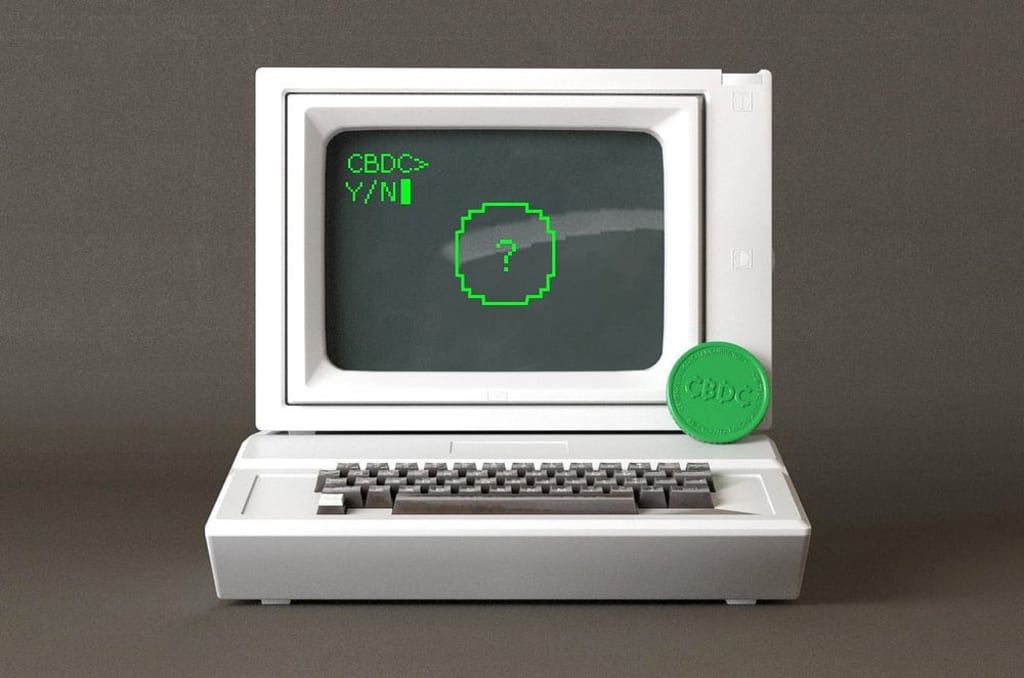95% of Banks Are Exploring Digital Currency
The vast majority of central banks are now exploring central bank digital currencies, or CBDCs, according to a recent survey.

CBDCs Are Growing In Popularity
On Friday, May 6, the Bank for International Settlements (BIS) published a report suggesting that 90% of surveyed central banks are exploring CBDCs.
That term stands for "central bank digital currencies," a type of digital asset backed by traditional currencies such as the dollar or the Euro.
In addition to the overall participation rate, the data suggests that 62% of central banks are already "running concrete experiments." Over 30% of banks are focusing on CBDCs aimed at retail users, while over 65% of banks are focusing on "wholesale" CBDCs aimed at financial institutions alongside retail users.
The results of the survey also suggest that participation has grown over the past year in some regards. Notably, the number of central banks involved in a CBDC pilot doubled from 14% to 26% over the past year.
BIS conducted its survey in autumn 2021 and collected data from 81 institutions, meaning that the results represent a significant portion of the world's central banks.
In addition to collecting participation rates, BIS drew attention to countries with highly developed CBDCs.
It specifically named the Bahamas' Sand Dollar, Nigeria's eNaira, the Eastern Carribean's DCash, and China's e-CNY (also known as the digital renminbi) as examples of mature or complete digital currencies.
How Will CBDCs Change Payments?
As noted above, CBDCs are issued by a country's central bank. They are backed by and tied to the value of that country's fiat currency.
CBDCs provide some advantages over traditional digital banking. Firstly, they can settle transactions quickly and inexpensively compared to modern banking networks. If banks and payment services settle on a standard for CBDCs, this would broadly reduce the need for currency conversion.
CBDCs are also resistant to bank failure because they are centrally issued. They would continue to circulate even if smaller banks and financial services fail, providing an advantage over online banking as it is today.
CBDCs also frequently leverage blockchain, which is ideal for financial record-keeping. Unlike Bitcoin and other public cryptocurrencies, central banks maintain significant private control over a CBDC's ledger. This approach gives banks the ability to intercept illegal transactions while also giving CBDC users privacy insofar as public visibility is concerned.
Few if any bank services and payment cards support CBDCs at the moment. However, the option will likely become more commonplace as the technology becomes more mature in the future.
What a Weak U.S. Dollar Means for Foreign Consumers
With COVID-19, the Russia-Ukraine war, and rising interest rates, the U.S. dollar is weakening — but it’s not all bad news.
The buying power of the American dollar is frequently discussed as the U.S. enters a state of economic uncertainty. However, the trend may prove to be beneficial for consumers who reside outside the country.
International Events Affect the U.S. Dollar
The lasting effects of the COVID-19 pandemic and the ongoing Russia-Ukraine war have impacted almost every part of the American economy, from the supply chain to employment rates.
Decisions within the U.S. financial system have also affected the country’s economy. On May 4, the Federal Reserve announced that it will increase interest rates from 0.75% to 1% to protect against rising inflation rates.
The central bank raised interest rates to a lower degree than some expected (50 basis points rather than 75). Still, the decision seems to have caused a moderate drop in the value of the U.S. dollar nonetheless.
The dollar index briefly dropped to a one-week low of 102.48 before recovering to 103.55 on May 5.
In fact, this is just one of many events that have led the U.S. dollar to decline in value over the past several months. During 2020 and 2021, the dollar index intermittently fell as low as 0.90.
A Weaker Dollar Can Benefit Foreign Consumers
Though American spenders might be discouraged as they watch their own currency’s spending power decline, a weak dollar can provide opportunities for consumers residing in other countries.
A weaker U.S. dollar makes American goods and services relatively inexpensive for foreign buyers. In turn, some U.S.-based companies can see their foreign imports increase during times when the dollar is weak — compensating for potentially lost business from local buyers.
A weaker American dollar has similar effects in other areas that are highly dependent on international business, such as the tourism industry.
Of course, an endlessly declining dollar would lead to economic devastation within the United States itself. Fortunately, a weakening dollar can be a self-correcting phenomenon, and the U.S. dollar has indeed seen losses and recoveries since the turn of the millennium.
For those who invest in foreign currencies, these fluctuating prices provide an opportunity to buy the dollar when it has a low price. Then, investors can sell the dollar when its market price rises higher again.
In short, a weak U.S. dollar means that consumers and investors outside the country can get a good deal on American goods and services.
Read More : techicial.com
About the Creator
MrKarthikKN
Founded in 2020 by MrkarthikKN has come a long way from its beginnings in Global. When MrkarthikKN first started out, Blog passion for - Electronic Products and Info" drove them to job,






Comments
There are no comments for this story
Be the first to respond and start the conversation.